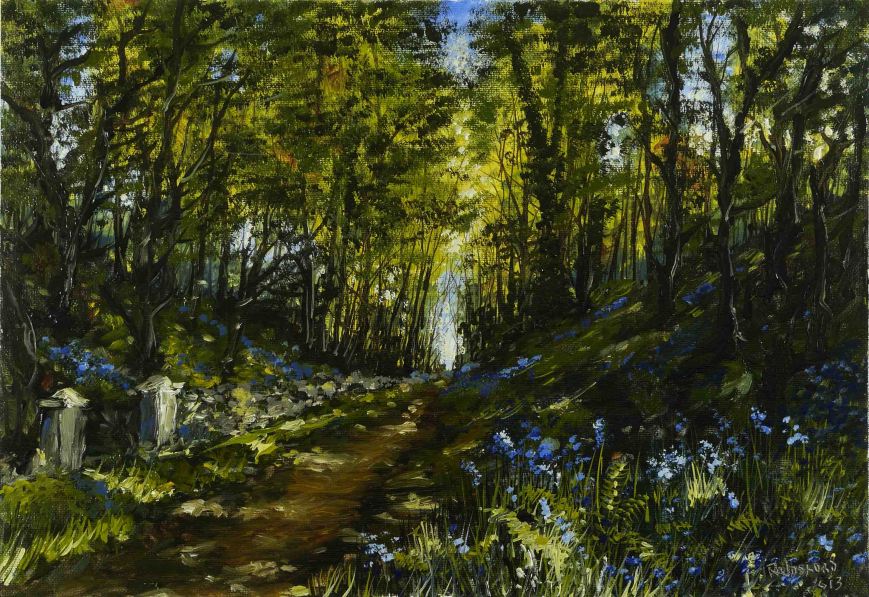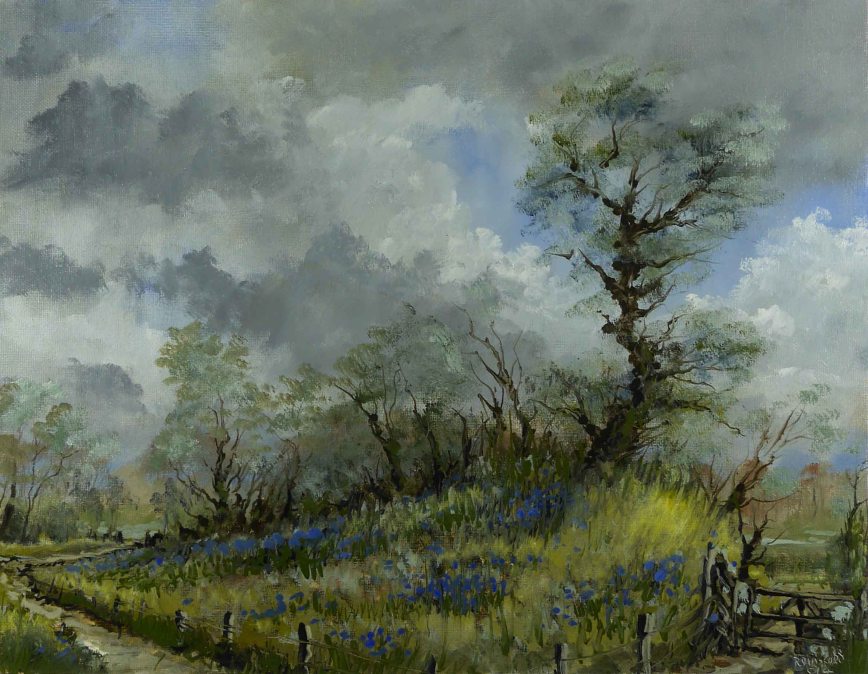The last painting (here) was in 2 parts. The first part included sky and horizon and was allowed to dry before finishing. For a beginner this makes the task a little easier if trees and foliage are to be painted onto the sky. Painting delicate branches and leaves onto a wet sky does not allow for mistakes and corrections usually requiring scraping off, repainting the sky and trying again. A little solvent on a tissue or cloth will completely remove wet paint from a dry layer allowing multiple attempts or corrections.
This painting was completely covered in the first stage and allowed to dry – easier still. Remember using Alkyd Fast Drying Oils by Winsor & Newton in the initial stage means you can paint the second stage the following day – faster in warmer weather. If you feel the need to use a medium (I don’t) use Liquin which is also fast drying. Don’t forget to thoroughly clean the brush when finished.
Because the first stage contained some dark colours these, as usual, dried matt and consequently a little lighter in tone. Before proceeding in the second stage I ‘oiled out’ the surface by rubbing a very light coating of W&N oil painting medium into the surface with a cloth. This gives the dry painting the appearance of a freshly painted surface. This wetting of the surface will also help the application of the fresh paint. As a rule I don’t use Liquin to ‘oil out’ as it dries very fast and could seal and retard from drying, paint which was not fully dry in the under layer.
Here is a video of the process. To view in realtime change setting to .25. Quality can also be set up to 1080HD. This painting uses 4 colours (Yellow Ochre, Alizarin Crimson, Sap Green, Cobalt Blue) plus black and white. There is no medium used in the first stage, only White Spirits (Petroleum spirits). W&N painting medium was used in the second stage. 2 brushes used – No. 12 Filbert bristle & a Nylon liner. Ground is Fredrix Canvas Pad 10″x8″.









